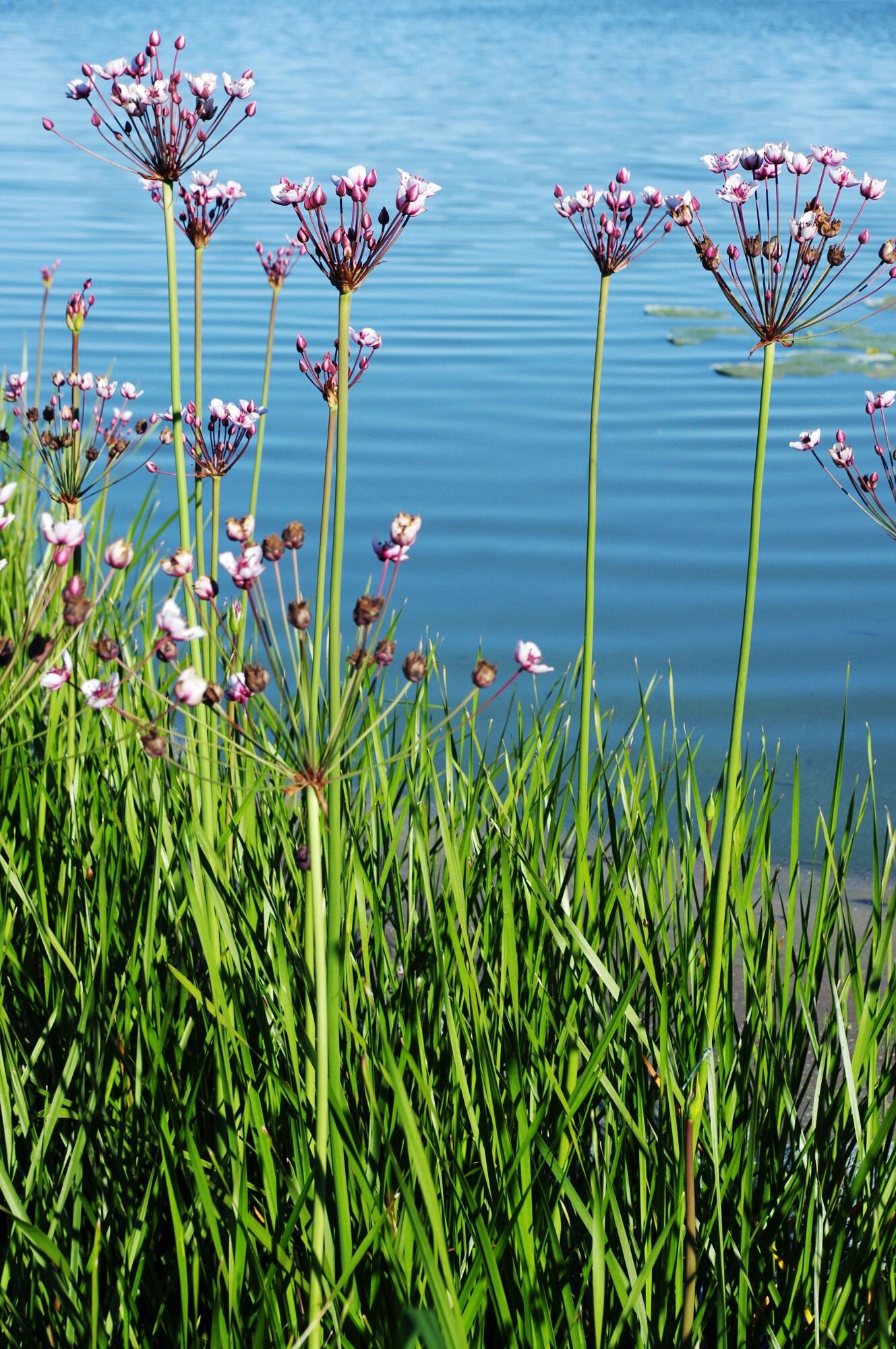Our Aquatic Invasive Species Guide
Preventing new species from being introduced and controlling those species already in Lake Minnetonka is the main focus of the Lake Minnetonka Association.
Current Aquatic Invasive Species in Lake Minnetonka
Eurasian Watermilfoil
Plant Type: Submerged
Status: Widespread throughout Minnesota
Native Look-alike: Northern Watermilfoil (Myriophyllum sibiricum)
HOW TO ID
• 12-21 pairs of leaflets
• Stems are limp and spaghetti-like
• Stems are reddish brown to pink
Curlyleaf Pondweed
Plant Type: Submerged
Status: Widespread throughout Minnesota
Native Look-alike: Clasping Leaf Pondweed
HOW TO ID
• Leaves are crinkly
• Fine-toothed leaf edges
• Leaf tips are blunt
• Leaf base does not wrap around the stem
• Begins growing in early spring before other plants and dies back mid-summer
• Forms dense mats
Flowering Rush
Plant Type: Submerged/Emergent
Status: Limited presence in Minnesota
Native Look-alike: Bulrushes, Arrowhead
HOW TO ID
• Very difficult to identify when not flowering
• Grows in shallow water, generally in depths
of 10 feet or less
• Tall, dark green leaves
• Stem is triangular in cross-section
• Cluster of pink flowers is held on a round stalk Whatever it is, the way you tell your story online can make all the difference
Zebra Mussels
Status: Present in Minnesota
Native Look-alike: None
HOW TO ID
• D-shaped
• Sits flat on its side
• Color varies but is usually light brown to white with brown/black stripes
• Size: 0-1.25 inches in length
Prospective Aquatic Invasive Species in Lake Minnetonka
Hydrilla
Plant Type: Submerged
Status: Not yet found in Minnesota
Native Look-alike: Canadian Waterweed (Elodea canadensis)
HOW TO ID
• Whorls of 4-8
• Whorl of leaves is smaller or the same size as a quarter
• Fine-toothed leaves
Spiny Waterflea
Status: Present in the Great Lakes and northern Minnesota
Native Look-alike: None
HOW TO ID
• Hard to detect without a net but may get tangled on fishing line or anchor rope
• 1/4 to 5/8 inches long
• Long, straight tail spine that is twice as long as its body
Quagga Mussel
Status: Not yet in Minnesota
Native Look-alike: None
HOW TO ID
• Rounder in shape than the zebra mussel
• Does not sit flat on its side
• Color varies but is typically lighter than the zebra mussel
• Can grow to larger sizes than zebra mussels (1.5 inches in length)
Starry Stonewort
Plant Type: Submerged/Macro-algae
Status: 19 lakes are infested in Minnesota
Native Look-alike: Chara, sago pondweed, water star-grass
HOW TO ID
• Grass-like appearance
• Smooth, thin stems
• Branchlets in whorls of 5-8
• Forked tips of branchlets are asymmetrical
• Small, white, star-shaped bulbils (flower like structure)
• Small, orange spheres (antheridia) may be present








